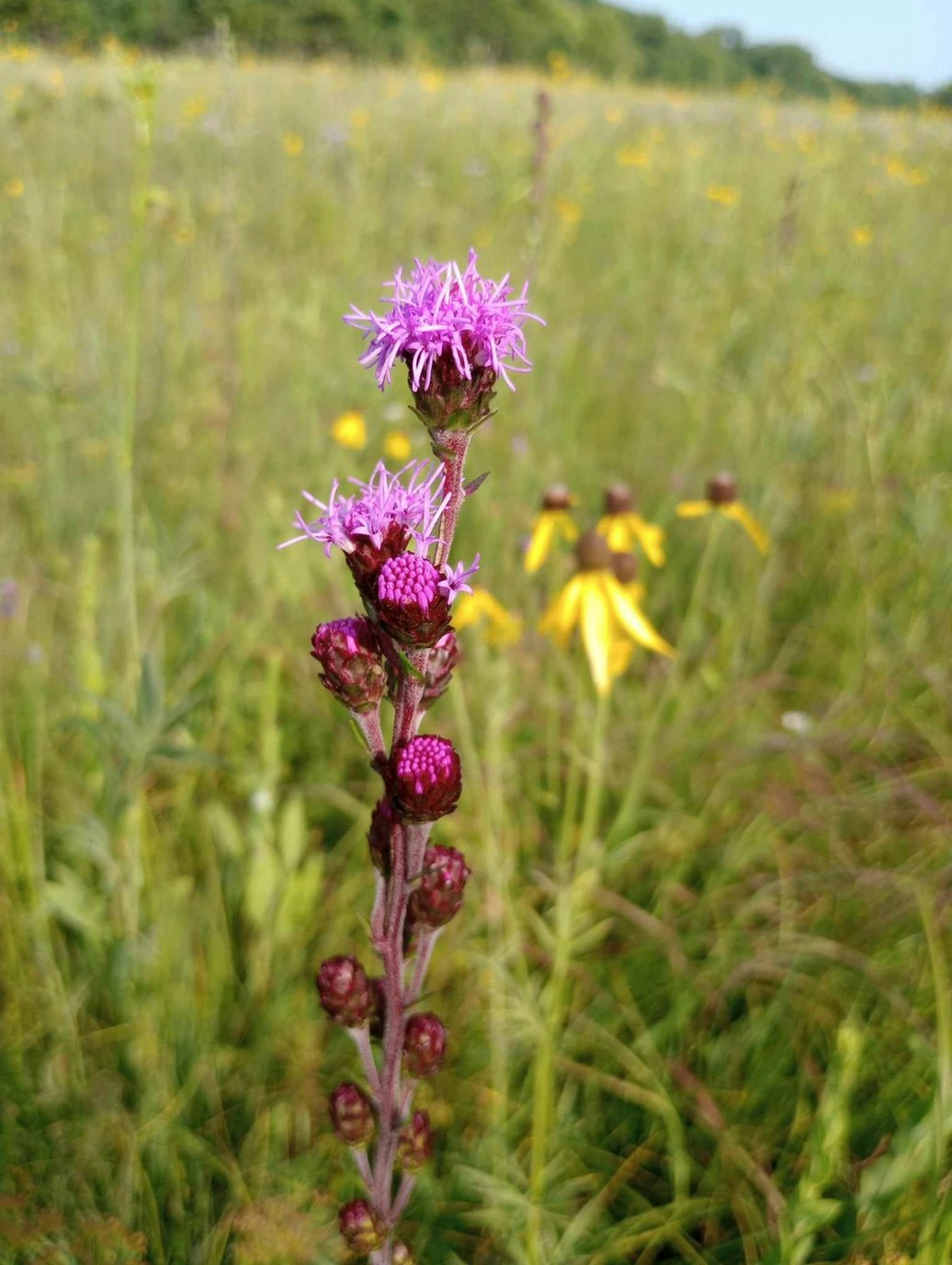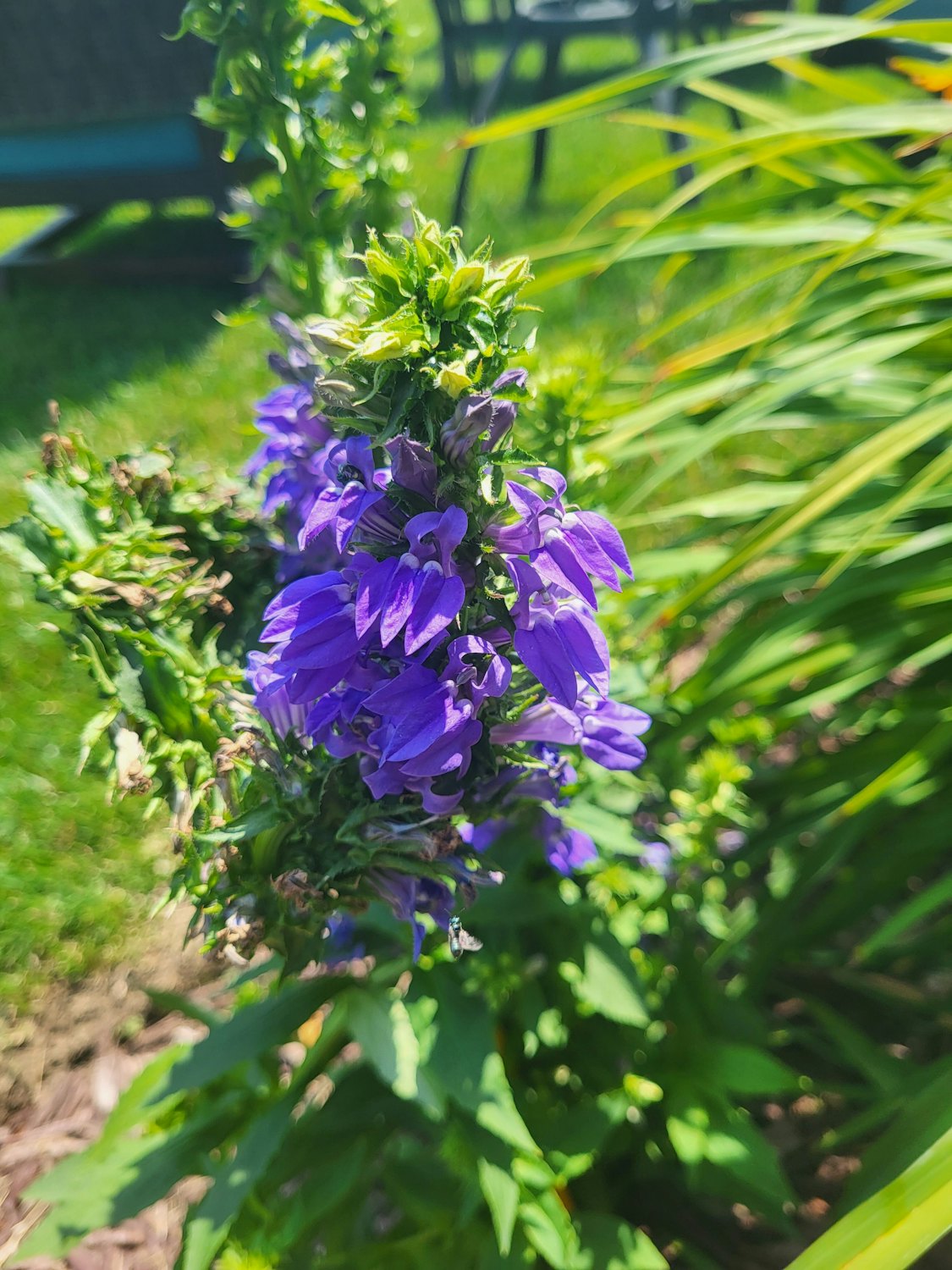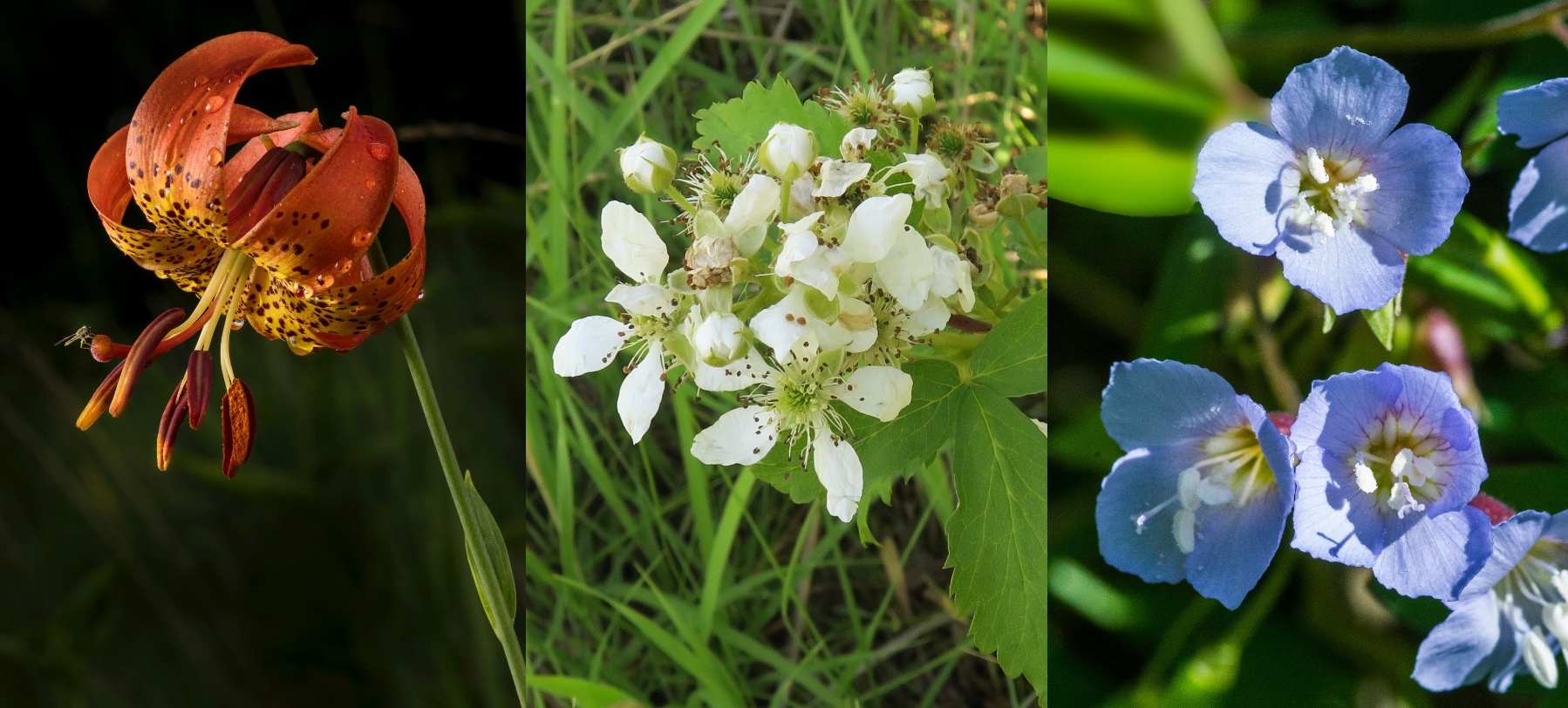To mark this Fourth of July, I decided to create a new version of a post I compiled six years ago, when Independence Day coincided with “Iowa wildflower Wednesday.” Click on any link for more pictures and information about that plant.
Most of the photos enclosed below came from the Iowa wildflower enthusiasts Facebook group, which now has more than 10,000 members. Join us to share pictures, ask ID questions, learn about gardening with native plants, or just enjoy a break from negativity on social media. It’s a politics-free zone. I also republished some pictures by Bleeding Heartland guest authors. You can find the full wildflower archive here.
SPRING AND EARLY SUMMER
Red: Prairie trillium. Elizabeth Marilla took this picture in 2020 while hiking in Sockum Ridge County Park (Washington County). Lora Conrad wrote a whole post about these wildflowers in 2019.

White: Wild strawberry. Anne Craig Wagner provided this photo of the flowers.

Blue: Jacob’s Ladder. Lora Conrad wrote about these lovely spring wildflowers last year.

Red: Wild ginger. You have to get low to see these flowers under the leaves. Emily Bredthauer photographed these blossoms (and many other wildflowers) at Margo Frankel Woods State Park this spring.

White: Spring cress. This is one of Katie Byerly’s photos, from her informative post about these wetland plants.

Blue: Virginia bluebells. These are popular with gardeners and may be the easiest spring wildflowers to identify in the wild. Emily Bredthauer photographed these at Margo Frankel Woods.

Red: wild red columbine. Melissa Wubben took this picture of one of the most popular native plants for gardeners.

White: White baneberry. Another shot by Emily Bredthauer. Last year, Beth Lynch featured these plants and their berries.

Blue: Sweet William, also known as Wild blue phlox. This photo by Lora Conrad comes from her tour of the Croton Unit of Shimek State Forest in 2022.

Red: Pawpaw. Lora Conrad wrote a Bleeding Heartland post about these fruit trees, which grow in the wild in only a few southern Iowa counties. She observed, “The blossoms slowly turn to a deep burgundy—reminiscent of the wild ginger blossom.”

White: Blackberry. I photographed these blooming near the woodland edge at Mike Delaney’s restored Dallas County prairie in May 2023.

Blue: Spiderwort. Patti Cale-Finnegan took this picture outside the Neal Smith National Wildlife Refuge.

Red: Unripe black raspberries. You don’t want to pick them when they are this color! My post on these plants shows the flowers and berries at all stages of ripeness.

White: New Jersey tea. Janette Foust provided this image and tells me the pink flowers are Bush’s Poppy Mallow.

Blue: Larkspur. Diane Turner Forristall provided this photo.

Red: Michigan Lily. Jacob Pitzenberger took this gorgeous photo and commented, The Michigan Lily is one of just two species of lilies native to Iowa, the other being the Wood Lily (Lilium philadelphicum).” He says you can distinguish the two because petals of Michigan Lily “curve strongly backwards almost touching the base of the flower.” The insect visiting this flower is a Margined Calligrapher, according to Jacob, “one of three Toxomerus hover fly species we have in Iowa.”

White: Elderberry. Jo Hain captured this lovely detail; the small white flowers occur in huge clusters.

Blue: Blue-eyed grass. Lisa Petrie took this picture. Diane Porter recently featured these plants (which are not grasses).

Red: Common milkweed. Thanks to Morgan Mcconnell for the close view of these flowers.

White: Stonecrop. I wasn’t familiar with these plants; Anne Craig Wagner (who took this picture) told me they are a native succulent ground cover.

Blue: Another view of spiderwort, courtesy of Liz Modrell. I think these are Ohio spiderwort, which Diane Porter recently covered on her newsletter, My Gaia.

Red: wild strawberry (fruit). Thanks to Melissa Wubben for the photo.

White: Prairie larkspur. Morgan Mcconnell took this picture; I don’t think I have ever seen these flowers in the wild.

Blue: Chicory. These plants are native to Europe, not North America. But they have become naturalized across much of the U.S. Carrie Levine took this picture.

SUMMER AND EARLY FALL
Red: Red Mexican hat, courtesy of Janette Foust.

White: Slender mountain mint. I have trouble distinguishing the mountain mints, so appreciate the ID from Janette Foust, who captured these with the bumblebee visitor.

Blue: American bellflower. Gloria Beebout provided this photo of one of my all-time favorites.

Red: American germander, also known as Canada germander or wood sage. It’s more pink than red, but in the same color family. Morgan Mcconnell took this picture.

White: Yarrow. I find these difficult to photograph, so particularly appreciated this shot by Morgan Mcconnell.

Blue: Blueflag iris or wild blue iris. Katie Byerly featured these striking plants last summer. Jo Hain contributed this photo.

Red: Dotted blazing star. Kenny Slocum took this picture at Wilkinson Prairie (Cerro Gordo County) in July 2023.

White: Narrow-leaf vervain, courtsey of Janette Foust. I don’t think I’ve ever seen these plants.

Blue: Dayflower. These plants belong in Asia, not North America, but they have become prevalent across much of the U.S. Tammy Lawson shared this image.

Red: Oswego tea, also also known as scarlet bee balm or red bergamot. This plant is native to the northeastern U.S., not Iowa. But it is closely related to wild bergamot (horsemint, bee balm), which is native to Iowa. If you see Oswego tea anywhere in Iowa, it was likely planted there or escaped from someone’s garden. Emilene Leone took this phenomenal photo of a hummingbird visiting an Oswego tea plant in her yard, and included it in her how-to post from 2020 about converting her garden to native plants.

White: Rattlesnake master. This plant looks like nothing else you might see on an Iowa prairie, so it’s easy to identify. Gloria Beebout provided this photo.

Blue: Great blue lobelia. This photo comes from Kara Grady’s essay on “Monarch waystations” from last year.

Red: The fruit of red baneberry plants. Janette Foust provided this picture; I learned from Beth Lynch’s “Meet the baneberries” post last year that some red baneberry plants produce snow-white berries.

White: Starry campion. These plants are usually found in wooded or shady areas. Gloria Beebout shared this photo.

Blue: Tall blue lettuce, also known as blue wood lettuce. I took this picture in 2018, about a month and a half after Walnut Creek flooded this trail. You can see a lot of sand on the ground.

Red: Cardinal flower, also known as red lobelia. This one’s on my list of “must feature someday” plants. David Vote shared his image.

White: Obedient plant. When I’ve seen these wildflowers, they are usually more pink than white. But this colony photographed by Anne Craig Wagner has white blossoms.

Blue: Northern Monkshood. Katie Byerly searched for three years to find these extremely rare wildflowers blooming. Her photo essay is the closest most of us will ever get to these plants.

Red: Coralberry. Lora Conrad featured these native shrubs in 2022; this picture comes from Melissa Wubben.

White: Cream gentian. Katie Byerly wrote of these plants in 2021, “I look forward to seeing cream gentian every year in the prairie at the Lime Creek Nature Center in Mason City.” This is one of her photographs.

Blue: Lesser fringed gentian. These are much more rare than bottle gentian (another prairie native with blue flowers). No one I know has a better knack for finding rare wildflowers than Katie Byerly. This is one of her photos.

Red: Highbush cranberry, courtesy of Melissa Wubben.

White: Calico aster? It’s some aster for sure. Thanks to Patti Cale-Finnegan for the picture.

Blue: Downy gentian. Eileen Miller allowed me to publish her photographs of these stunning flowers in 2014. This is one of her images, with an open flower and a bud to the left.



1 Comment
Thank you, Laura!
If I ever join Facebook, that wildflower group is the first place I’ll go.
This colorful floral lineup is really lovely. If I had to pick a favorite, it would be very hard, but I’d choose the downy gentian. And I would like to know more about the “stonecrop.” The only white “stonecrop” I was able to find is a non-native Sedum, but it’s entirely possible that I missed a different species that shares that common name.
PrairieFan Thu 4 Jul 1:36 PM